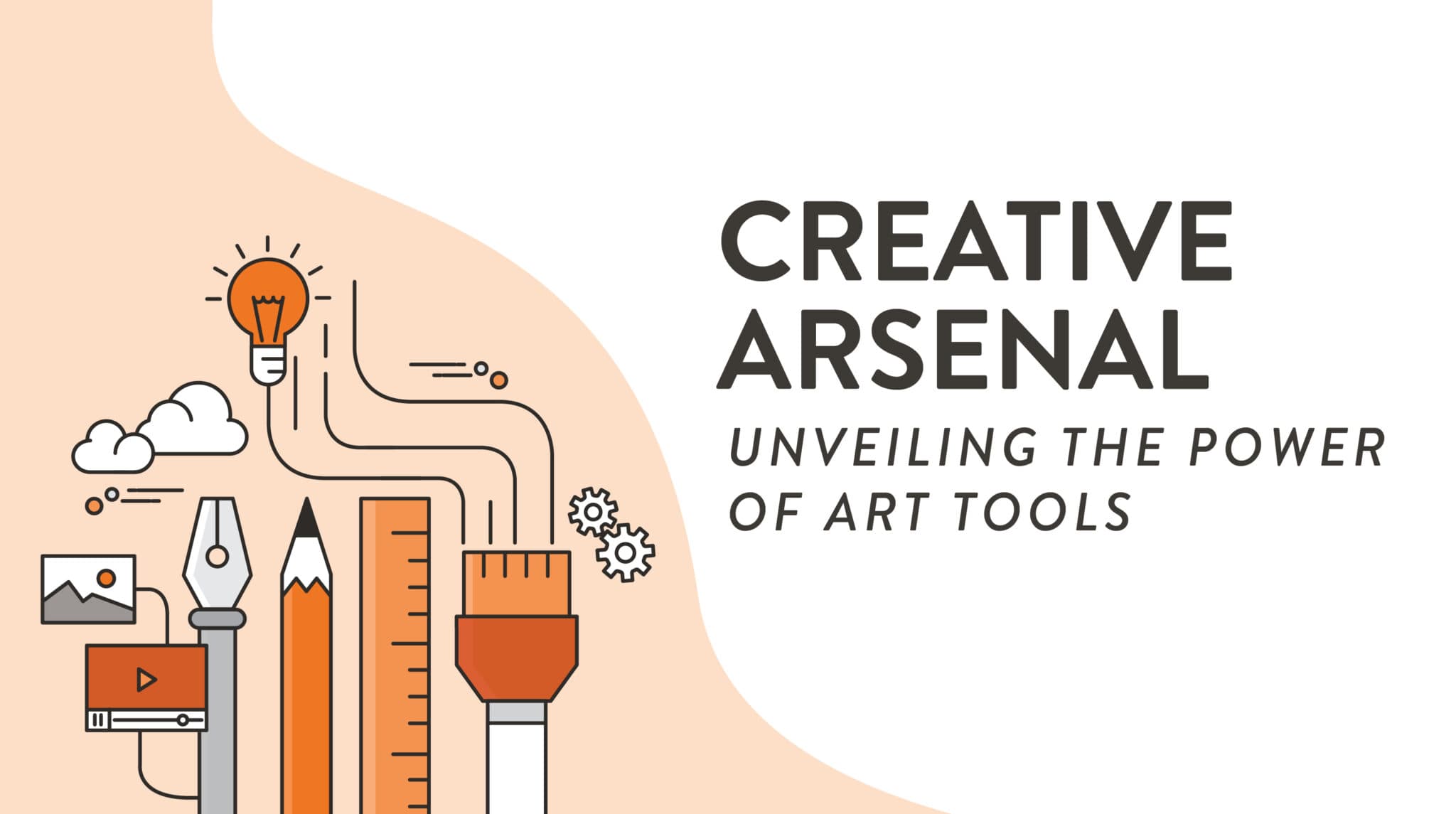While practice and dedication are undoubtedly important in perfecting your skills as an artist, using the correct art tools for your next commission, job, or project plays a powerful role in setting yourself up for success and bringing your creative vision to life. Whether you’re a working artist or an eager learner, let’s explore the impact of using the right art supplies, examine a list of top tools used by artists everywhere, and understand the proper maintenance needed to make the most out of your tools.
IMPACT OF THE RIGHT TOOLS ON ART QUALITY
Before we explore several tools, it’s important to remember that choosing the right art supplies can have a serious influence on the quality of your work as an artist. According to ArtPlacer, when experimenting with a new technique, you might run into trouble if you aren’t using the right tools for the job.
Like oil and water, some artists might attempt to use tools that simply don’t mix well with their chosen medium. This can lead to wasted time, money, and art supplies. Whether you’re a traditional painter, digital illustrator, or mixed media aficionado, each medium demands specific tools to achieve the desired result.
Now that you have a better understanding of the importance of choosing the right tools, let’s dive into some of the tools you might encounter throughout your career as an artist.
DRAWING TOOLS
Whether you’re a hobbyist, student, or working professional, drawing tools are the backbone of any artist’s toolkit. From creating intricate sketches to practicing proper shading, drawing tools such as graphite pencils, charcoal, and pastels are go-to instruments when it comes to perfecting the drawing medium. Let’s take a closer look at a few common drawing tools.
PENCILS AND GRAPHITE
Graphite pencils are commonly used for general writing, drawing, and sketching because they can create a wide range of tones, from light to dark. When considering the many types of graphite pencils available to artists, it’s important to understand the difference between tones to choose the best pencil for your project. According to Artful Haven, “The softer the pencil, the bolder mark it creates. For example, a pencil marked 8B is super soft and that’s why it’s easier to make bolder and darker lines.”
Keeping this in mind, be sure to find reputable suppliers that give you a wide selection of pencils to choose from. Most graphite art kits will come with a range of light and dark tones for you to choose from for your next piece.
CHARCOAL AND PASTELS
Commonly used in life drawing, charcoal and pastels give a distinct texture and depth to drawings, each in their own way. Charcoal creates bold, dramatic effects, while pastels produce vibrant and blended colors. According to The Met, charcoal has been used since the renaissance age “to develop initial ideas, preliminary outlines, areas of shadow, or for squaring grids used to transfer a design to another surface.”
Both of these art tools allow artists to experiment with shading and texture, adding a unique dimension to their creations. Unlike charcoal, pastels bring a pop of color to works of art and may be easier for an aspiring artist to pick up.
PAINTING MEDIUMS
Similar to drawing, painting is a versatile, traditional medium that allows artists to express themselves using a wide range of colors, textures, and techniques. Whether you use flat brushes or round brushes, the type of paint used will be the main factor in the look and feel of the piece. Some of the most popular materials to accompany painting tools are acrylic paints and watercolors. Let’s dive into the key differences between the two.
ACRYLIC PAINTS
There are several benefits to using acrylic paint on your next project. According to Liquitex, an industry leader in commercial acrylics, things that make acrylic paint so special are its quick drying times, low odor, and its ability to stick to almost any surface.
The flexibility and quick-drying nature of acrylics make them suitable for both traditional and experimental approaches. By carefully selecting the right tools with this material, artists can create textured layers, smooth blends, and intricate details with acrylic.
WATERCOLORS
Watercolors have a magical way of surprising you with unexpected beauty. Whether you are attempting new techniques or tried-and-true methods, you can be sure that watercolors will be a great addition to your artist repertoire.
To get started with watercolors, make sure you have a good quality set of paints, a selection of brushes in different shapes and sizes, watercolor paper, and a palette for mixing your colors.
DIGITAL ART TOOLS
As the digital age continues to grow, so do new digital art tools. Whether it’s new software or an updated firmware, these digital tools allow artists the opportunity to create, manipulate, and experiment with new techniques and ideas faster than ever. Digital tools are used in professional studios from DreamWorks and Pixar to local art organizations.
GRAPHIC TABLETS AND STYLUSES
From the iPad Pro to Wacom tablets, graphic tablets with styluses provide artists with a digital canvas that can mimic traditional drawing surfaces. The pressure sensitivity and precision of the stylus allow for accuracy and control, making it feel like a natural extension of an artist’s hand. Artists can explore various digital brushes and textures, creating digital artworks that rival traditional mediums.
DIGITAL SOFTWARE
What would a graphic tablet be without digital software? Digital art software such as Photoshop, Illustrator, and Procreate offer a range of tools and features that empower artists to bring their ideas to life. These software programs provide options for brushes, layers, textures, and color palettes, giving artists the freedom to experiment and show off their skills as digital artists.
Students enrolled in RMCAD’s online or on-campus degree programs gain free access to the Adobe Suite along with several other digital softwares.
SCULPTING AND MODELING TOOLS
Whether you’re a seasoned sculptor or a curious beginner, having the right tools, and instructor, can make sculpting and modeling a fun, yet challenging experience to grow your skills in. Although different mediums, clay and digital sculpting both rely on hand-eye coordination to execute projects to a high level.
CLAY AND POTTERY TOOLS
When working with clay and pottery, artists rely on a variety of tools to sculpt, shape, and refine their creations. Tools such as wire loops, ribbons, and sculpting knives help artists add details, create textures, and manipulate the clay. It’s best to experiment with different tools and find what you prefer to use while on the wheel.
DIGITAL SCULPTING SOFTWARE
Similar to clay sculpting, digital sculpting software offers artists the opportunity to create intricate 3D models. The tools provided by these software programs, such as ZBrush and Blender, allow artists to sculpt, texture, and refine their creations virtually.
Often considered beginner-friendly tools, new artists gravitate towards digital mediums as they provide forgiving features such as the eraser and masking tool. Digital sculpting tools add a new dimension to the artist’s abilities, offering endless possibilities for rendering, animation, and visual effects.
PRINTMAKING TOOLS
Printmaking is a traditional art form that involves transferring an image onto various surfaces, such as paper or fabric. Different printmaking techniques require specific tools to achieve precision and desired results. Let’s look at two common printmaking methods.
LINOCUT AND WOODCUT TOOLS
Linocut and woodcut tools include carving knives, gouges, and brayers. These tools enable artists to carve intricate designs into linoleum or woodblocks. The carved block is then inked and pressed onto paper, resulting in unique prints with rich textures and bold lines. Using the correct art tools allows artists to bring out the texture and details in their prints.
ETCHING TOOLS
Etching is a printmaking technique that involves creating designs on metal plates. Tools, such as etching needles, burnishers, and acid-resistant grounds, enable artists to transfer designs onto the metal plate by etching or engraving.
PHOTOGRAPHY TOOLS
Did you know that over five billion photos are taken each day? According to a recent Forbes article, that number is expected to grow 27% in the next year. When considering the very basics of photography, we can group tools into two buckets: cameras and software. Let’s take a look at why each is important.
DSLR AND MIRRORLESS CAMERAS
DSLR and mirrorless cameras provide photographers with advanced features such as interchangeable lenses, full manual control, and high-resolution image sensors. These tools allow photographers to capture images with incredible detail, sharpness, and depth of field. The right camera, along with an eye for detail, enables photographers to share a picture worth a thousand words.
EDITING SOFTWARE
Editing software like Adobe Lightroom and Photoshop are essential tools for photographers. These software programs offer photographers the ability to enhance and manipulate their images, adjusting colors, tones, and sharpness. Post-processing with the right editing tools allows photographers to fine-tune their images
CALLIGRAPHY AND LETTERING TOOLS
Calligraphy is making quite the comeback in the modern art scene. With the medium trending, it’s important to understand the different tools available in the craft. Calligraphy and lettering are forms of visual art that require precision, control, and a mastery of various writing tools.
NIBS, PENS, AND BRUSHES
Calligraphy and lettering rely on specialized nibs, pens, and brushes to create strokes with varying thickness and styles. These tools enable artists to create intricate letterforms, from elegant and flowing scripts to bold and geometric designs. The right tool selection allows calligraphers to achieve consistency, balance, and beautiful lettering compositions.
INKS AND PAPERS
It’s important to consider the different inks and papers and how that affects calligraphy. Different inks offer different characteristics, such as flow, viscosity, and permanence. Specialized papers designed for calligraphy and lettering allow artists to achieve the desired texture, absorbency, and color vibrancy.
STORAGE AND ORGANIZATION
Although an afterthought for many beginners, the proper storage, care, and organization of art tools are critical to a professional artist’s workflow. Taking proper care of your tools can extend their life and performance, allowing you to save on cost and art supplies throughout your creative career.
Additionally, be sure to follow the cleaning instructions of each tool to prolong the life of your gear. Storing tools in proper containers, holders, and bags will help keep tools organized and safe from any unwanted dust and moisture. Using proper storage solutions typically goes hand-in-hand with organizational skills, allowing you to focus on your creative flow.
READY TO PUT YOUR KNOWLEDGE INTO PRACTICE?
No matter if you work with traditional or digital mediums, it’s important to understand which tools will work best to bring your creative vision to life. Now that you have a baseline of the many tools available to artists, take the first step into putting your knowledge into practice by exploring RMCAD’s online and on-campus degree programs here.

